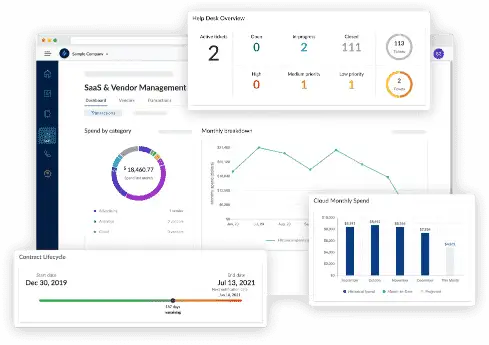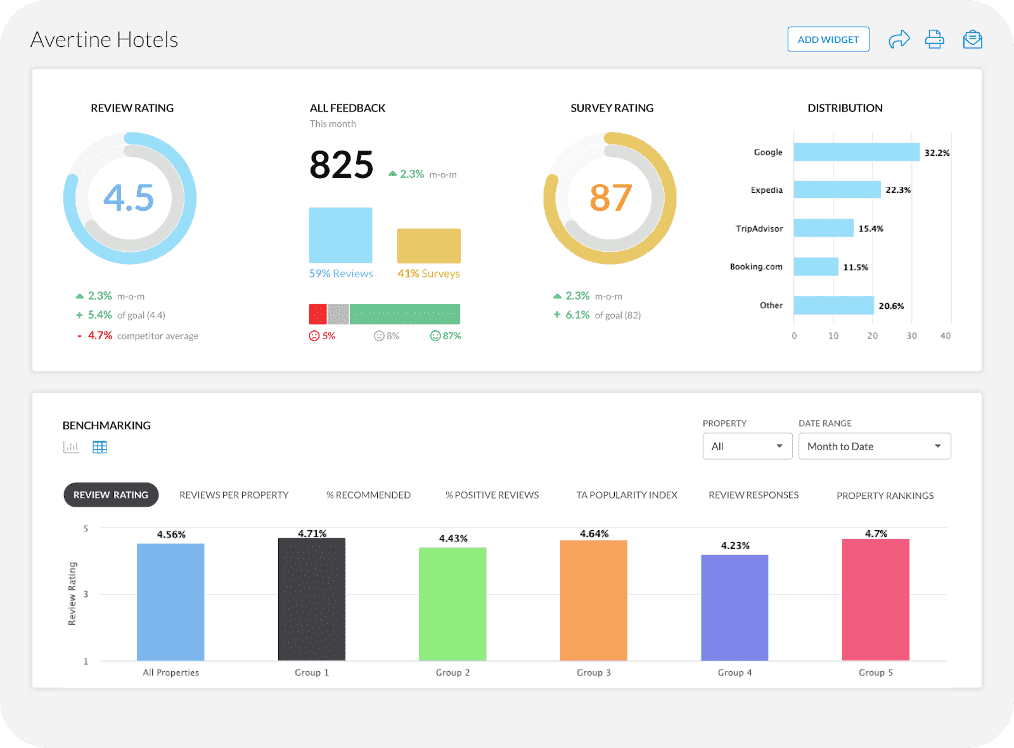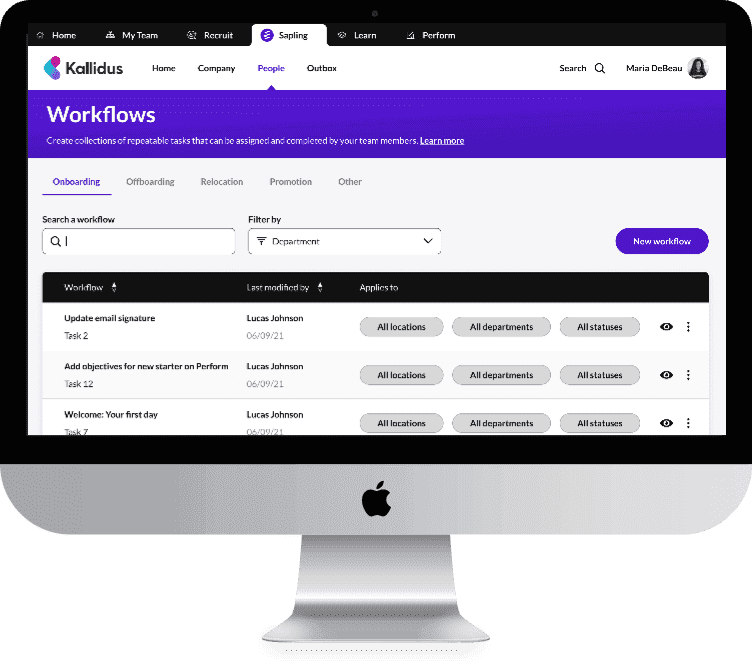React is a valuable library for creating user interfaces and one of its prominent features is forwardRef. At first, one might feel it is complex to use, but it is quite beneficial for managing refs in a flexible way, particularly in component libraries.
Understanding React forwardRef
Before understanding forwardRef, you need to know what is “red” in React. In short, you can ‘reference’ as ‘ref’ and it allows you to directly access a DOM element or a class component within your React application. It is important when you need to manage focus, select text, or trigger animations in a direct way.
forwardRef becomes an essential tool in the React toolkit when components become more complex. This happens particularly with higher-order components or function components where you can’t use refs directly.
How Is forwardRef Different from Normal Refs?
Both forwardRef and a normal ref offer access to component instances or DOM nodes but there is an important difference between both of them.
With normal refs, you create a ref within a component and this allows the component to access its own DOM instances or nodes.
Contrary to that React forwardRef is used when there is a need for a parent component to directly access a child component’s DOM instance or node. It is similar to creating a direct line of communication between the child and the parent component. This bypasses the typical React data flow that relies on props and state.
Why Use forwardRef?
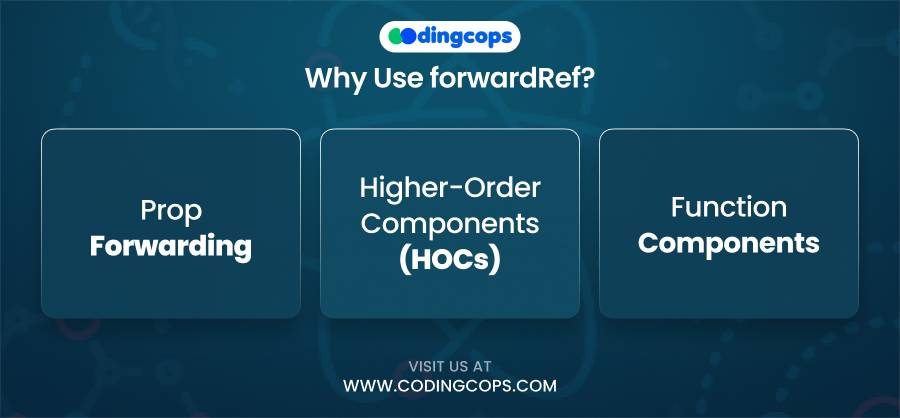
The following are the reasons why you should use forwardRef:
Prop Forwarding
It allows you to pass refs down to child components as props. This is particularly useful in component libraries.
Higher-Order Components (HOCs)
HOCs often need to pass refs to their wrapped components. forwardRef makes this possible without wrapping an additional layer.
Function Components
Unlike class components, function components do not have instances, so if you need a ref to a DOM element inside a function component, forwardRef is the way to go.
Practical Applications of forwardRef
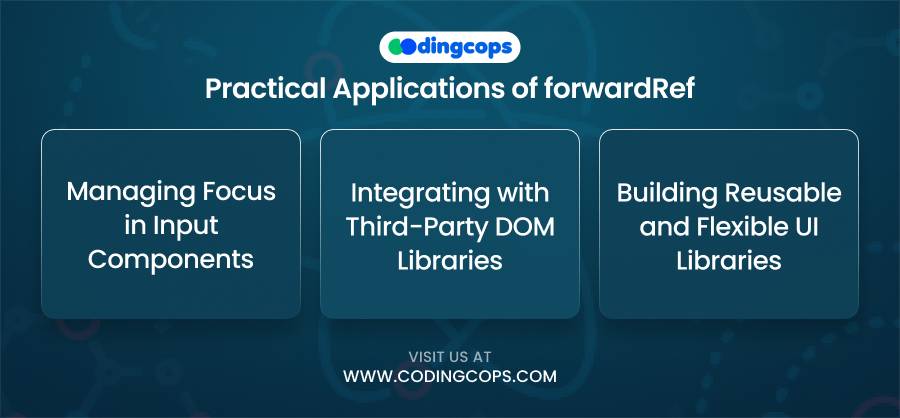
To make this more relatable and understandable for you, let’s explore a few scenarios where ReactJS forwardRef can be incredibly useful:
Managing Focus in Input Components
Imagine you have a custom input component wrapped in different layers. Directly managing its focus from a parent component without forwardRef would be cumbersome and involve multiple component layers.
Integrating with Third-Party DOM Libraries
When using third-party libraries that interact with the DOM (like D3.js for charts or Leaflet for maps), you often need direct access to the DOM node. forwardRef simplifies this integration.
Building Reusable and Flexible UI Libraries
If you’re building a UI library, you’ll want your components to be as flexible as possible. forwardRef allows users of your library to access the underlying DOM node, when necessary, which enhances the library’s usability.
Tips for Using forwardRef
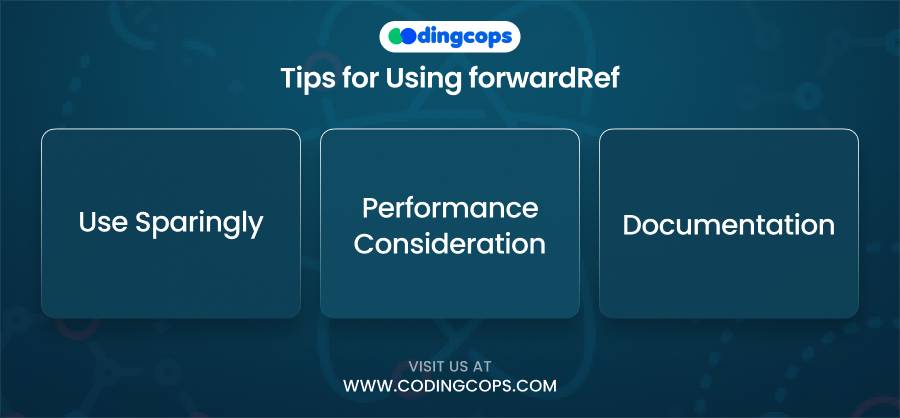
Although forwardRef is a valuable tool, it’s not always necessary. Here are some tips that you should keep in mind:
Use Sparingly
Only use forwardRef when you absolutely need to expose a ref to parent components.
Performance Consideration
Remember that using refs can sometimes lead to performance issues if not managed correctly, especially in large applications.
Documentation
If you’re creating a library, clearly document components that use forwardRef to make it easier for others to understand and use your components.
Conclusion
forwardRef in React is a beneficial feature for advanced use cases, particularly when you need to manipulate or access the DOM directly or pass refs through components. By understanding and using forwardRef appropriately, you can build more flexible and reusable components that can interact more deeply with the DOM or other components in your applications.
More Related Blogs
- React vs Angular
- Top 10 Future of React in 2024
- React Lifecycle Methods
- React State Management Libraries
- Spring Boot Developers






